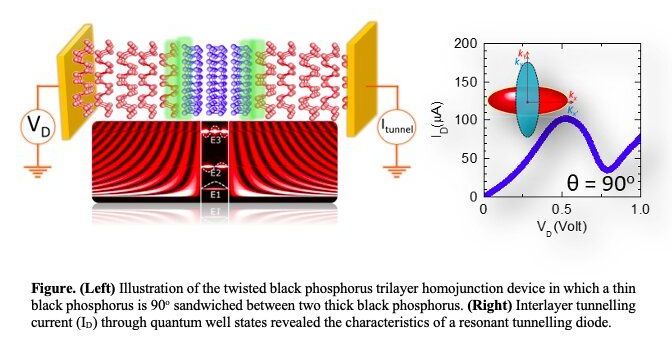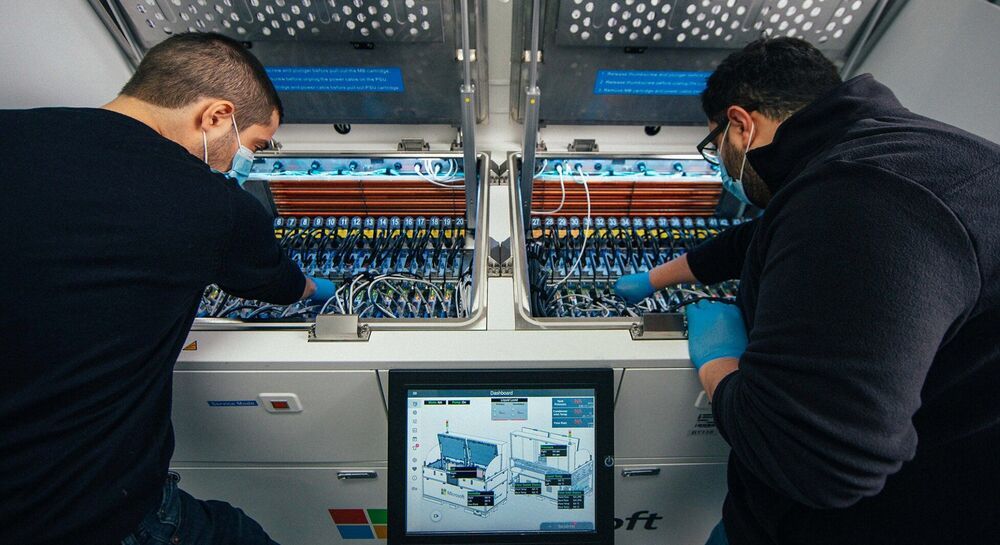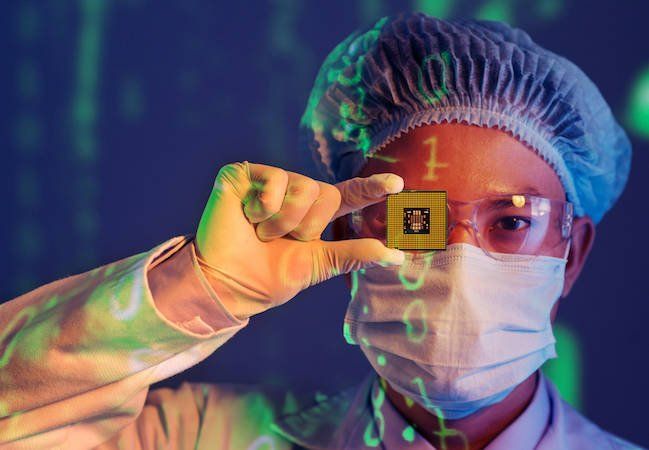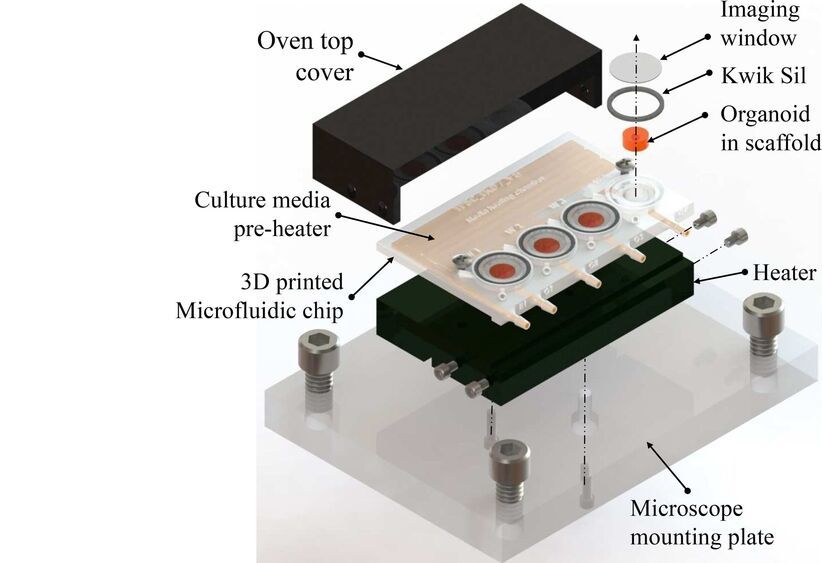Developing ultra high bandwidth brain-machine interfaces to connect humans and computers.
Category: computing – Page 672

Researchers realize resonant tunnelling diodes based on twisted black phosphorus homostructures
In recent years, electronics engineers worldwide have been trying to develop new semiconductor heterostructure devices using atomically thin materials. Among the many devices that can be fabricated using these materials are resonant tunneling diodes, which typically consist of a quantum-well structure placed between two barrier layers.
Past research has shown that stacking two-dimensional (2D) layers that are twisted in relation to each other can enhance or suppress the interlayer coupling at their interface. This suppression or enhancement can in turn modulate the electronic, optical and mechanical properties of the resulting device.
For instance, some studies found that the intralayer current transport in small angle twisted bilayer graphene prompted some exotic phenomena, such as superconductivity and ferromagnetism. These observations inspired a fundamentally new approach to device engineering, known as ‘twistronics’ (i.e., twist electronics).

Microsoft adopts boiling liquid to cool datacenter servers
Microsoft has implemented boiling liquid to help keep datacenter servers at reasonable temperatures. The company uses electronic equipment and liquid capable of boiling at 122 degrees Farenheit, 90 degrees below the boiling point of water.
Once the computer processors within the datacenters reach a certain temperature due to labor, the boiling effect moves heat away from the servers. This movement allows the processors to continue operating at full power without the risk of failure from overheating.
Microsoft engineered this solution using a tank that takes the fluid vapor from its liquid contents and exposes the mist to a cooling lid. This process transforms that vapor back into liquid and rain down onto the servers in order to cool the machines. This process of vaporization and condensation for cooling is known as a closed loop cooling system.




Display Driver Chip Shortage Leads to Delays for Pretty Much Everything
Bottom dollar.
Bloomberg today reported that a shortage of inexpensive display driver chips has delayed production of the LCD panels used in, well, pretty much every product category you can think of. Displays are ubiquitous, and many devices can’t function without them. But for the displays to work, they require a display driver — no, not Nvidia or AMD display drivers, those are software. We’re talking about a tiny chip that sends instructions and signals to the display.
That’s a fairly simple function, at least compared to those performed by the vastly more powerful components inside the device proper, which is why many display drivers cost $1. But a component’s price doesn’t always reflect its importance, as anyone who’s built a high-end PC, bought one of the best gaming monitors, and then realized they forgot to get a compatible cable can attest. That missing link is both cheap and vital.

Tiny brains grown in 3D-printed bioreactor
Scientists from MIT and the Indian Institute of Technology Madras have grown small amounts of self-organizing brain tissue, known as organoids, in a tiny 3D-printed system that allows observation while they grow and develop. The work is reported in Biomicrofluidics.
Current technology for real-time observation of growing organoids involves the use of commercial culture dishes with many wells in a glass-bottomed plate placed under a microscope. The plates are costly and only compatible with specific microscopes. They do not allow for the flow or replenishment of a nutrient medium to the growing tissue.
Recent advances have used a technique known as microfluidics, where a nutrient medium is delivered through small tubes connected to a tiny platform or chip. These microfluidic devices are, however, expensive and challenging to manufacture.

CRISPR-Chip advance streamlines genetic testing for medical diagnostics and research
Klas Moser.
What Musk is doing beside realizing his own dreams is inspiring thousands of young bright kids to keep on studying to realize their own dreams and I am sure that this is exactly what we humans need to create a better world on Earth as well.
This whol… See More.
2 Replies.
Rob Enderle.
It better come with a decent meal and reclining seats for that price. It’s a one-way trip too, so you better LOVE Mars.
View 4 more replies.

Intel to Collaborate with Microsoft on DARPA Program
What’s New: Intel today announced that it has signed an agreement with Defense Advanced Research Projects Agency (DARPA) to perform in its Data Protection in Virtual Environments (DPRIVE) program. The program aims to develop an accelerator for fully homomorphic encryption (FHE). Microsoft is the key cloud ecosystem and homomorphic encryption partner leading the commercial adoption of the technology once developed by testing it in its cloud offerings, including Microsoft Azure and the Microsoft JEDI cloud, with the U.S. government. The multiyear program represents a cross-team effort across multiple Intel groups, including Intel Labs, the Design Engineering Group and the Data Platforms Group, to tackle “the final frontier” in data privacy, which is computing on fully encrypted data without access to decryption keys.
“Fully homomorphic encryption remains the holy grail in the quest to keep data secure while in use. Despite strong advances in trusted execution environments and other confidential computing technologies to protect data while at rest and in transit, data is unencrypted during computation, opening the possibility of potential attacks at this stage. This frequently inhibits our ability to fully share and extract the maximum value out of data. We are pleased to be chosen as a technology partner by DARPA and look forward to working with them as well as Microsoft to advance this next chapter in confidential computing and unlock the promise of fully homomorphic encryption for all.” – Rosario Cammarota, principal engineer, Intel Labs, and principal investigator, DARPA DPRIVE program